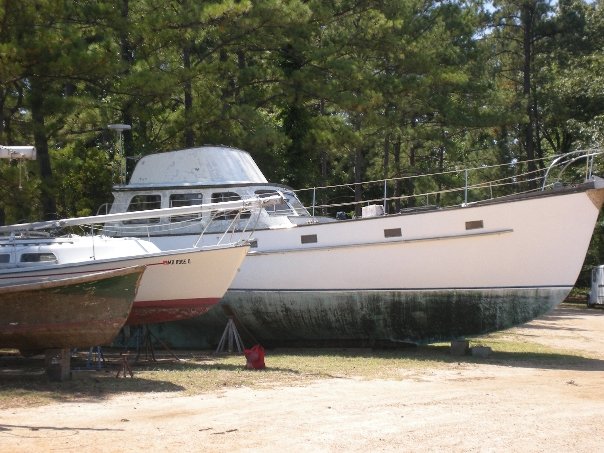We have the title to the boat! So Gypsy is officially no longer abandoned. We’ve decided to rename her, against many complaints from the “locals”, who see this boat as a fixture of the marina– as Dave likes to say, he’s been here so long, he’s no longer a “regular,” he’s furniture– and the boat’s been here far longer. She’ll soon be in the water, which will change the whole look of the boat-yard.
So what shall we name her? In homage to her color, her various nick-names (“the Bow of Gibraltar” being my favorite), one of Dave’s favorite shouted quotes from Moby Dick, and Isabel’s Spanish heritage, the new name will be– “Ballena Blanca”. (“White Whale” in Spanish.)
Of course, we’ll follow the traditional denaming and christening ceremonies– here’s the one I plan to use. First, every vestige of the old name must be removed from the boat. I’ve sanded the name off the transom, and donated the circa 1990, framed radio license to the marina “museum.” I can’t find any other trace of her name, but I’ll keep looking to be sure. Once that’s done, we’ll throw a party, and hold this ceremony (with thanks to the author, John Vigor):
“In the name of all who have sailed aboard this ship in the past, and in the name of all who may sail aboard her in the future, we invoke the ancient gods of the wind and the sea to favor us with their blessing today.
“Mighty Neptune, king of all that moves in or on the waves; and mighty Aeolus, guardian of the winds and all that blows before them:
“We offer you our thanks for the protection you have afforded this vessel in the past. We voice our gratitude that she has always found shelter from tempest and storm and enjoyed safe passage to port.
“Now, wherefore, we submit this supplication, that the name whereby this vessel has hitherto been known, Gypsy, be struck and removed from your records.
“Further, we ask that when she is again presented for blessing with another name, she shall be recognized and shall be accorded once again the selfsame privileges she previously enjoyed.
“In return for which, we rededicate this vessel to your domain in full knowledge that she shall be subject as always to the immutable laws of the gods of the wind and the sea.
“In consequence whereof, and in good faith, we seal this pact with a libation offered according to the hallowed ritual of the sea.”
Then we’ll pour or spray a bottle of good champagne over her bow, consigning her old name to history.
Later, when she’s ready for the water with fresh paint and new livery, we’ll perform the christening ceremony:
“I name this ship Ballena Blanca. May she bring fair winds and good fortune to all who sail on her.”
And according to custom, break a bottle of bubbly on her bow. I imagine I’ll intone the first ceremony, and Isabel will stand in for Queen Elizabeth for the second.
It’ll be quite a party!

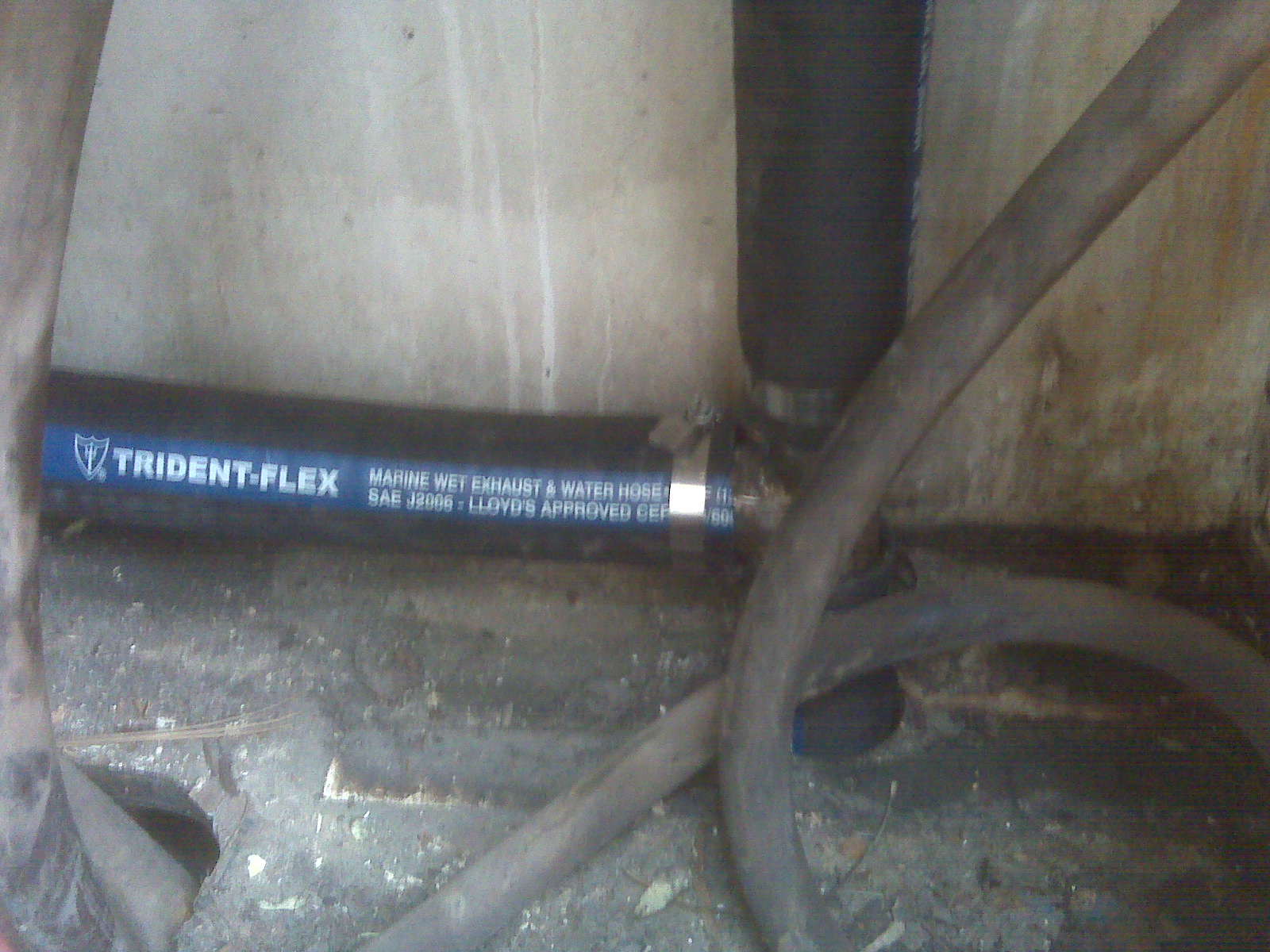
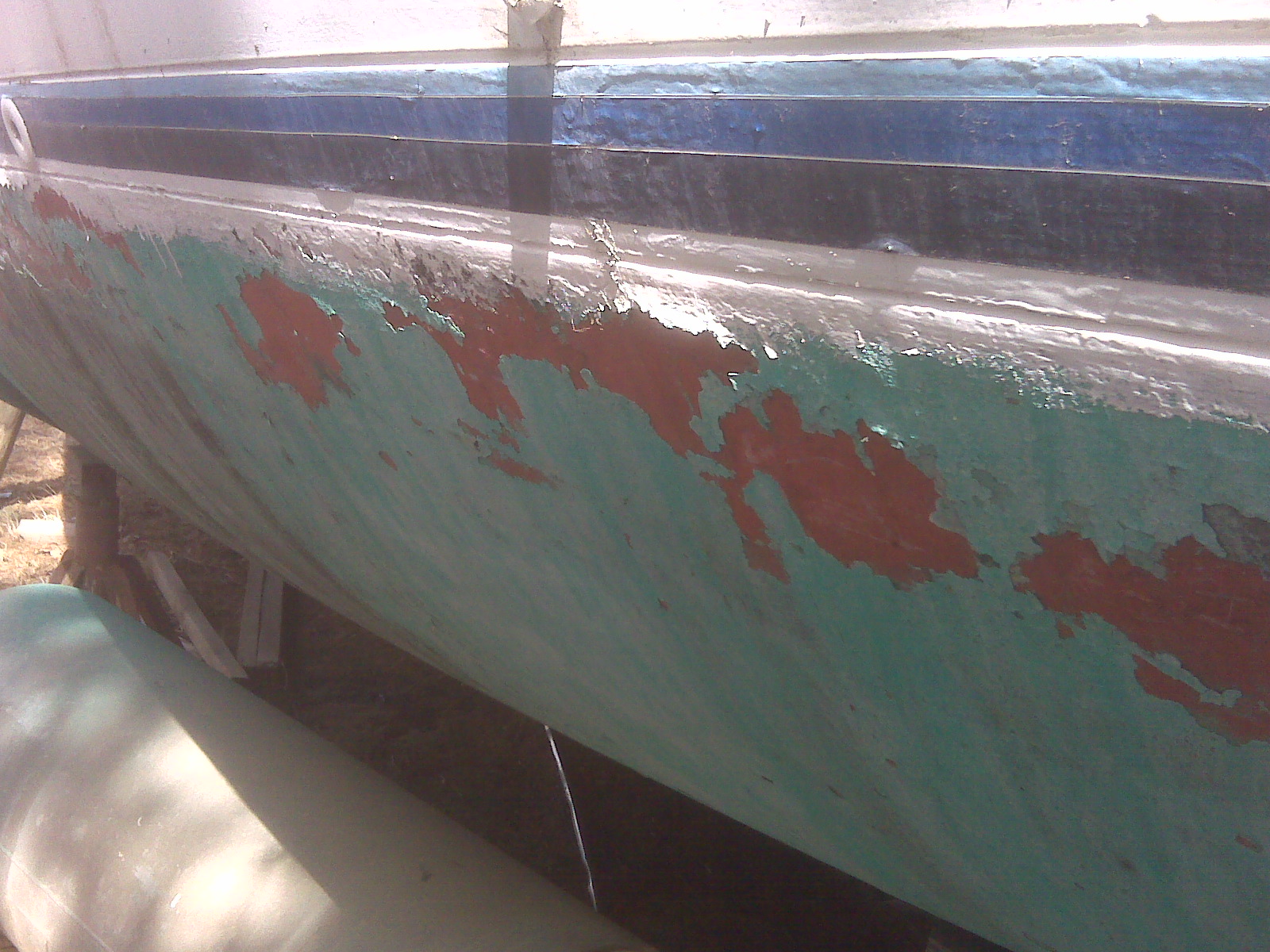
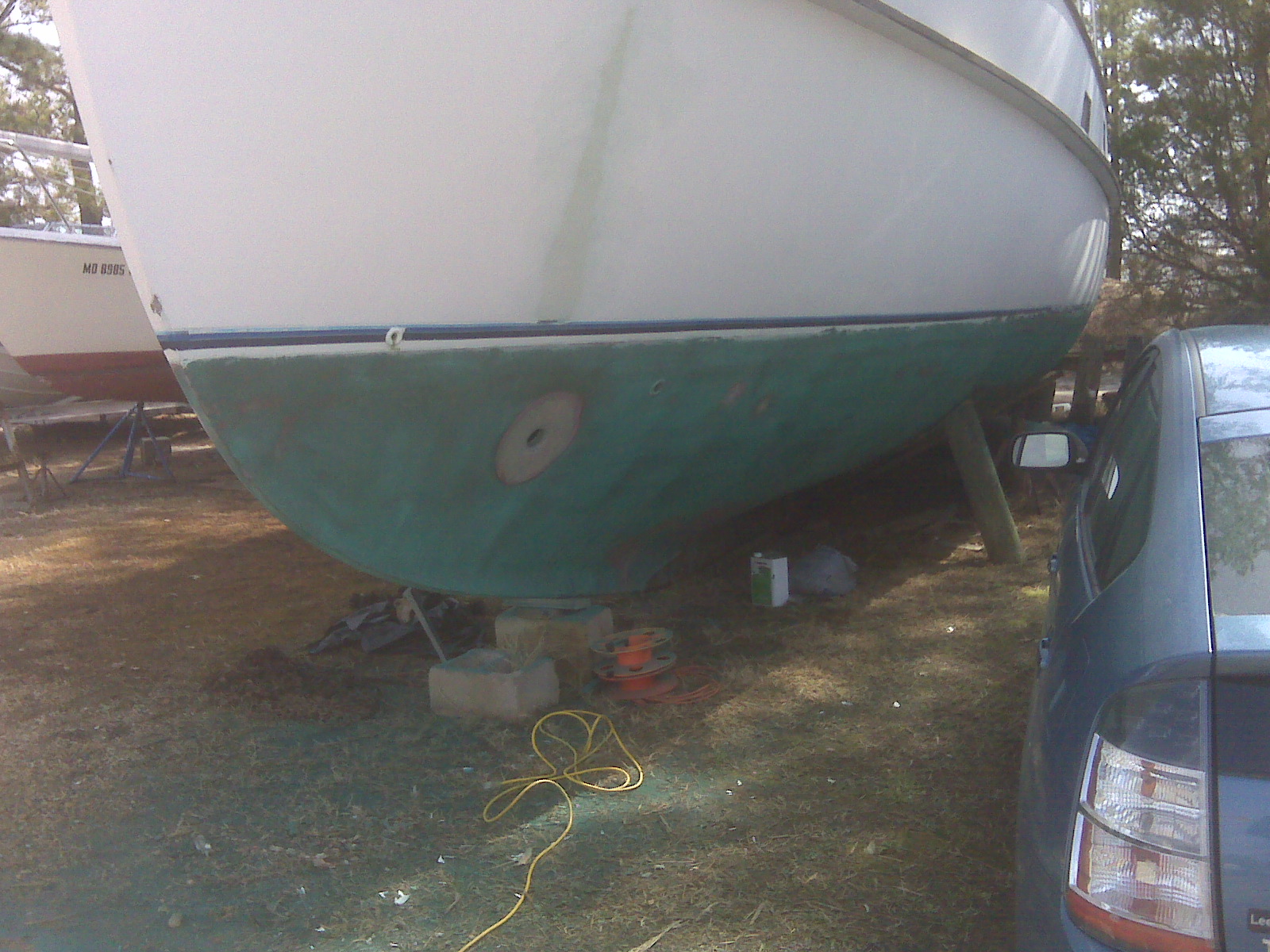
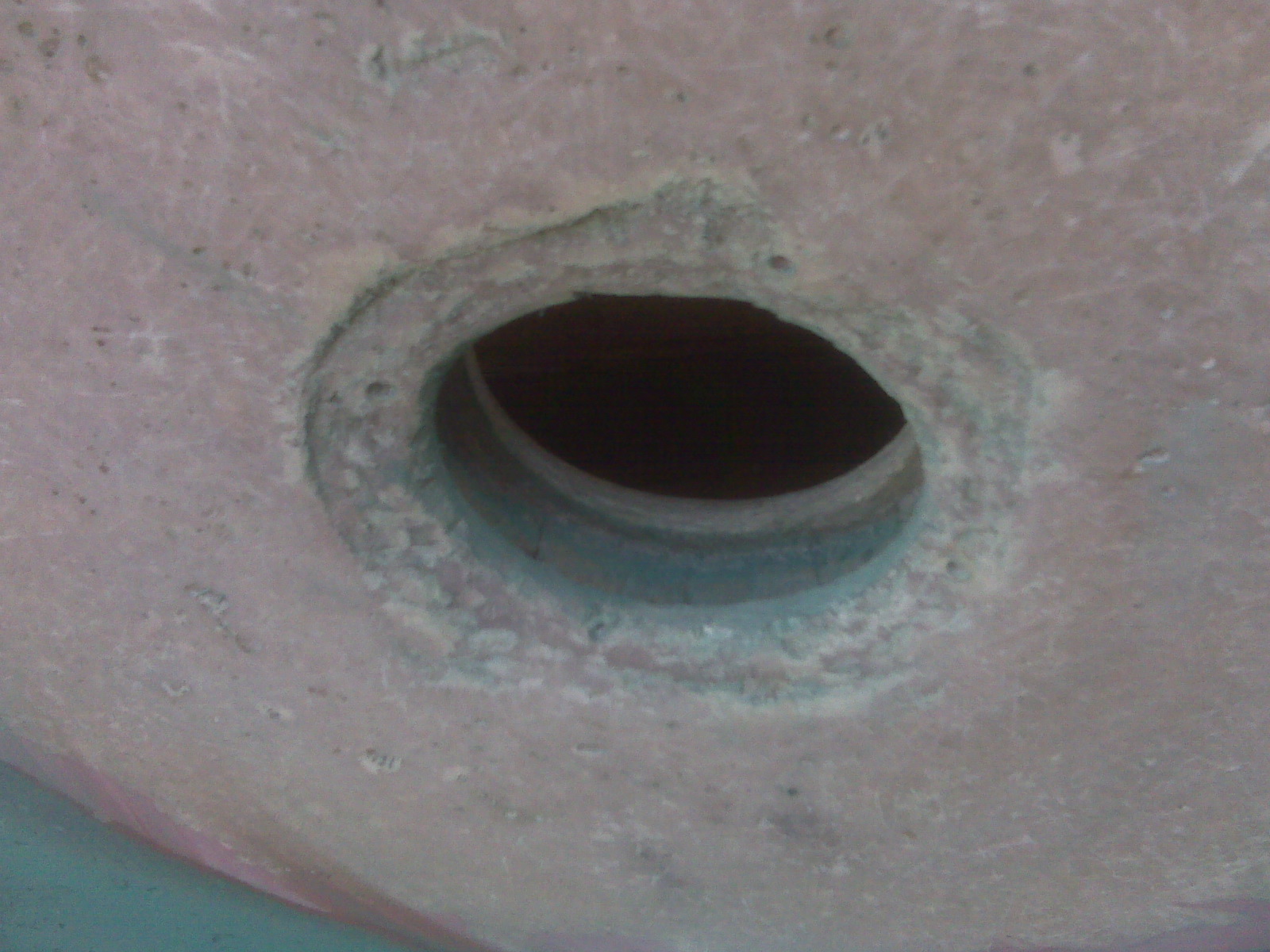
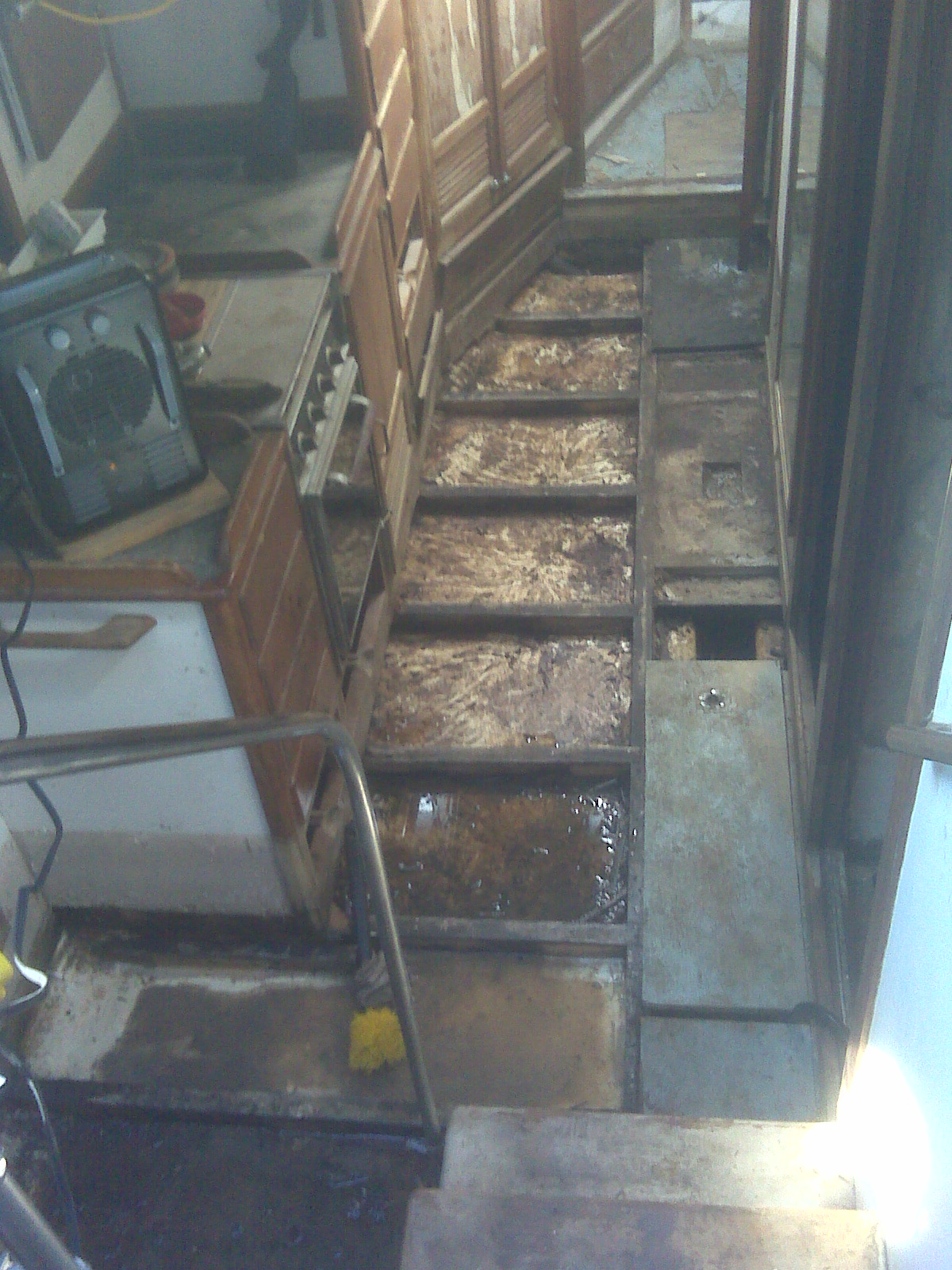
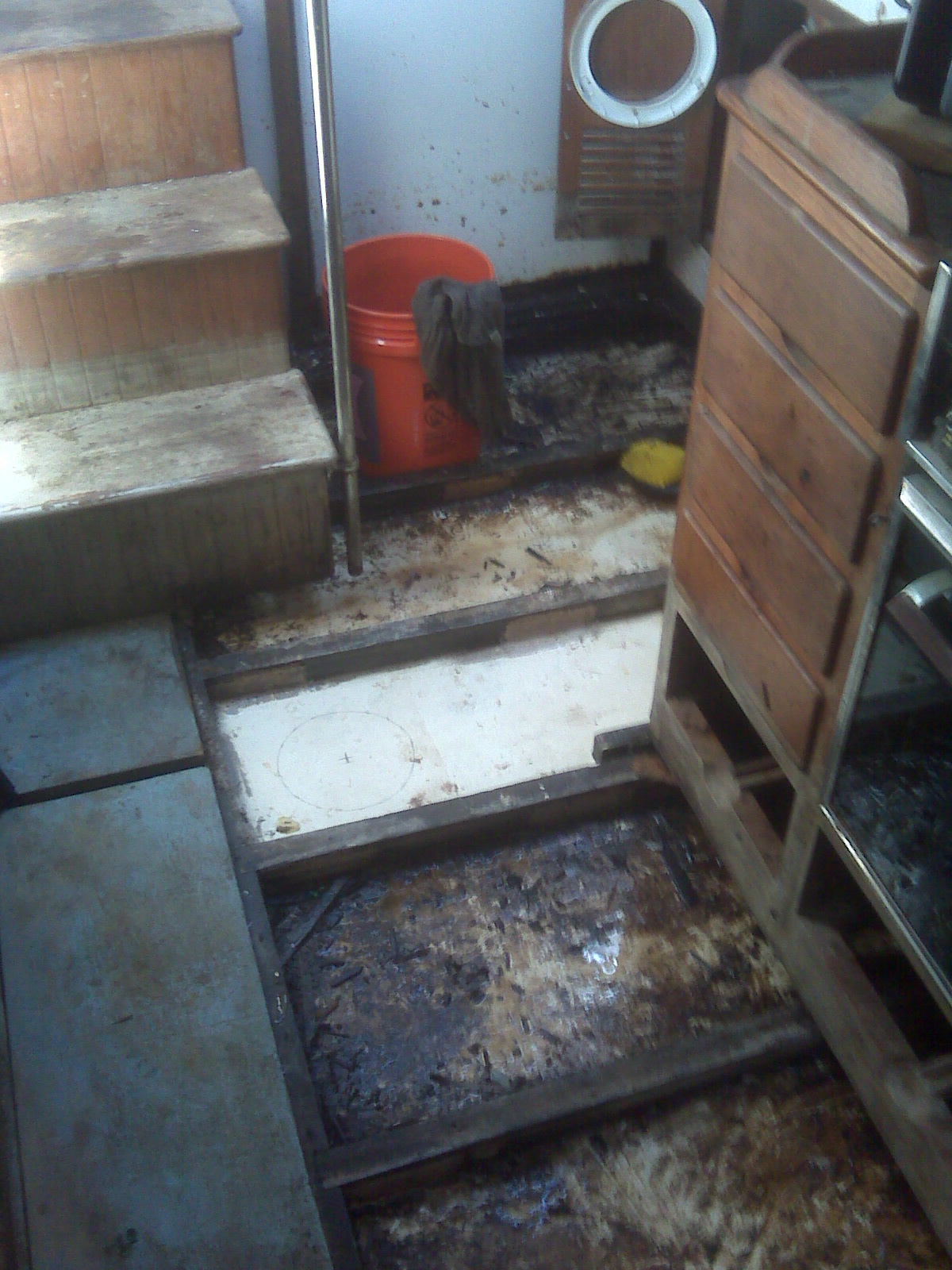
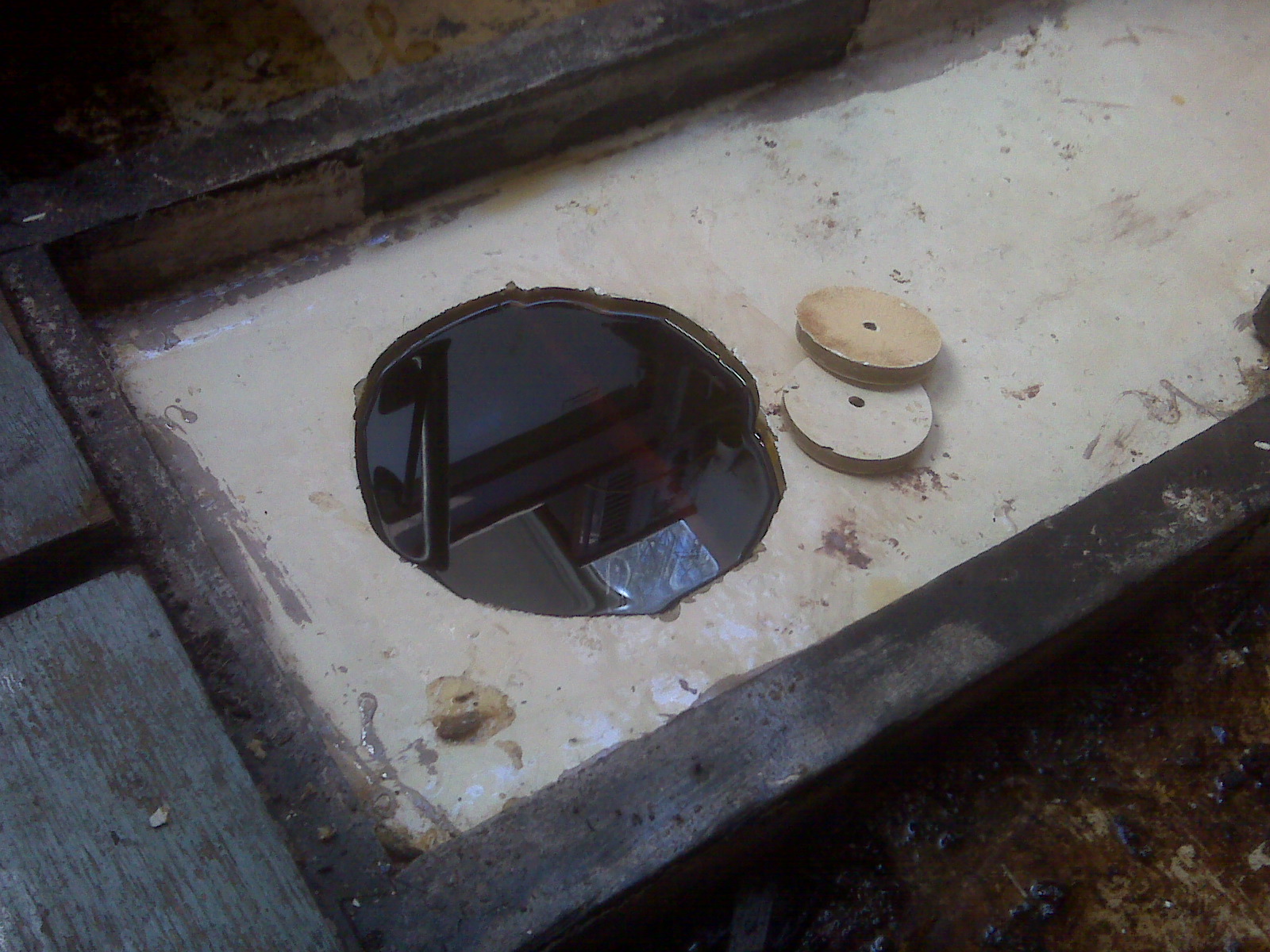
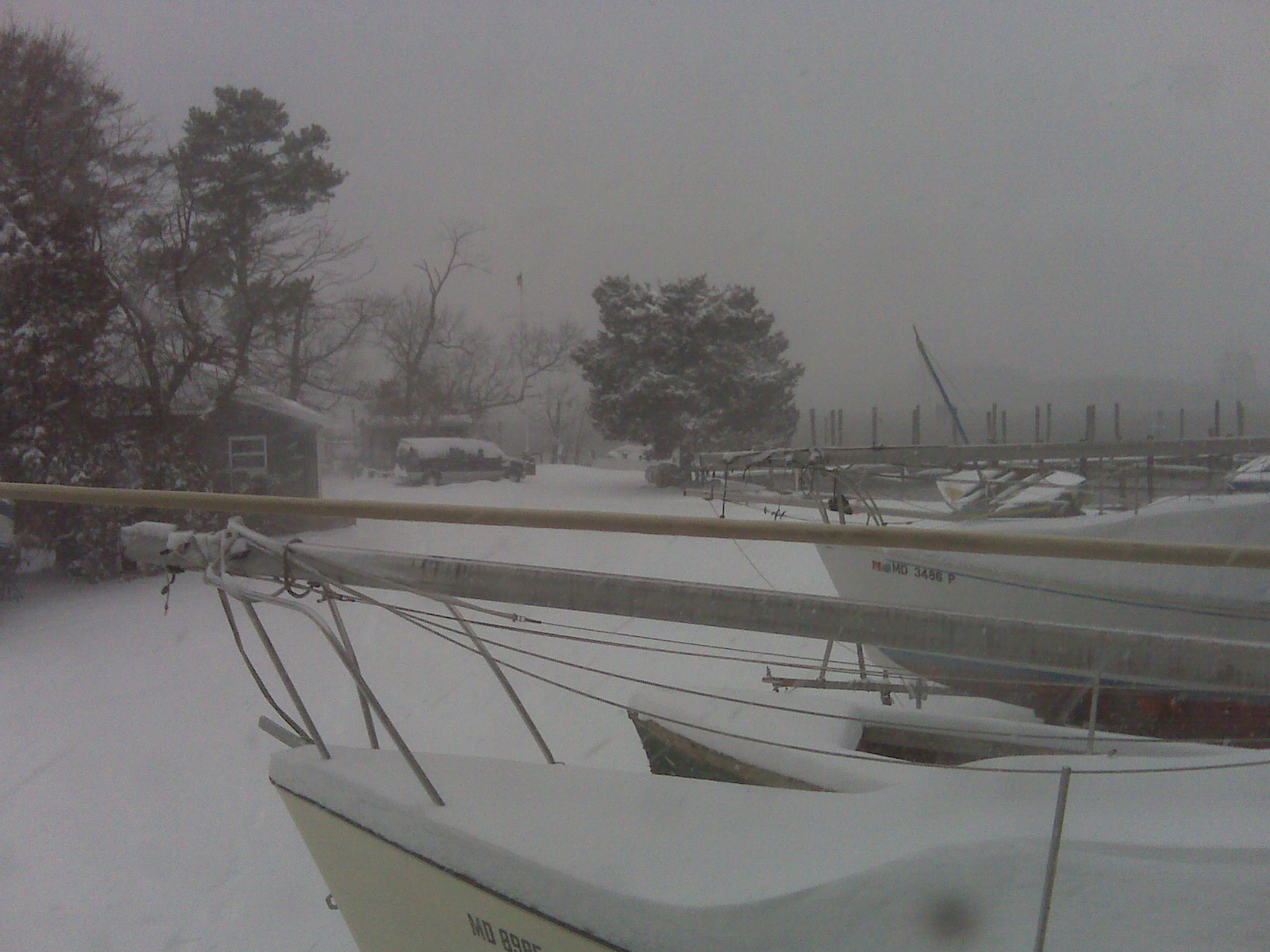
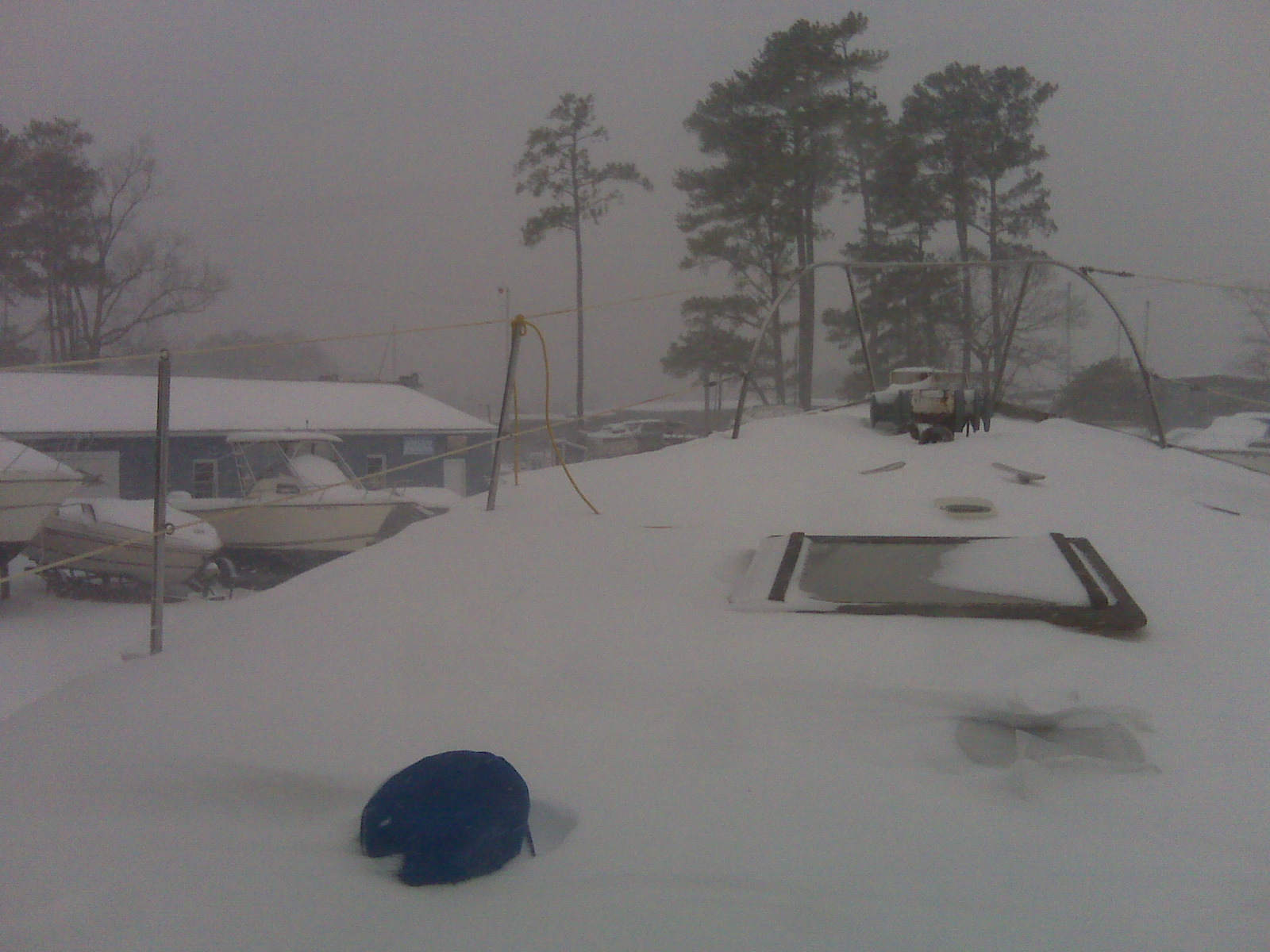
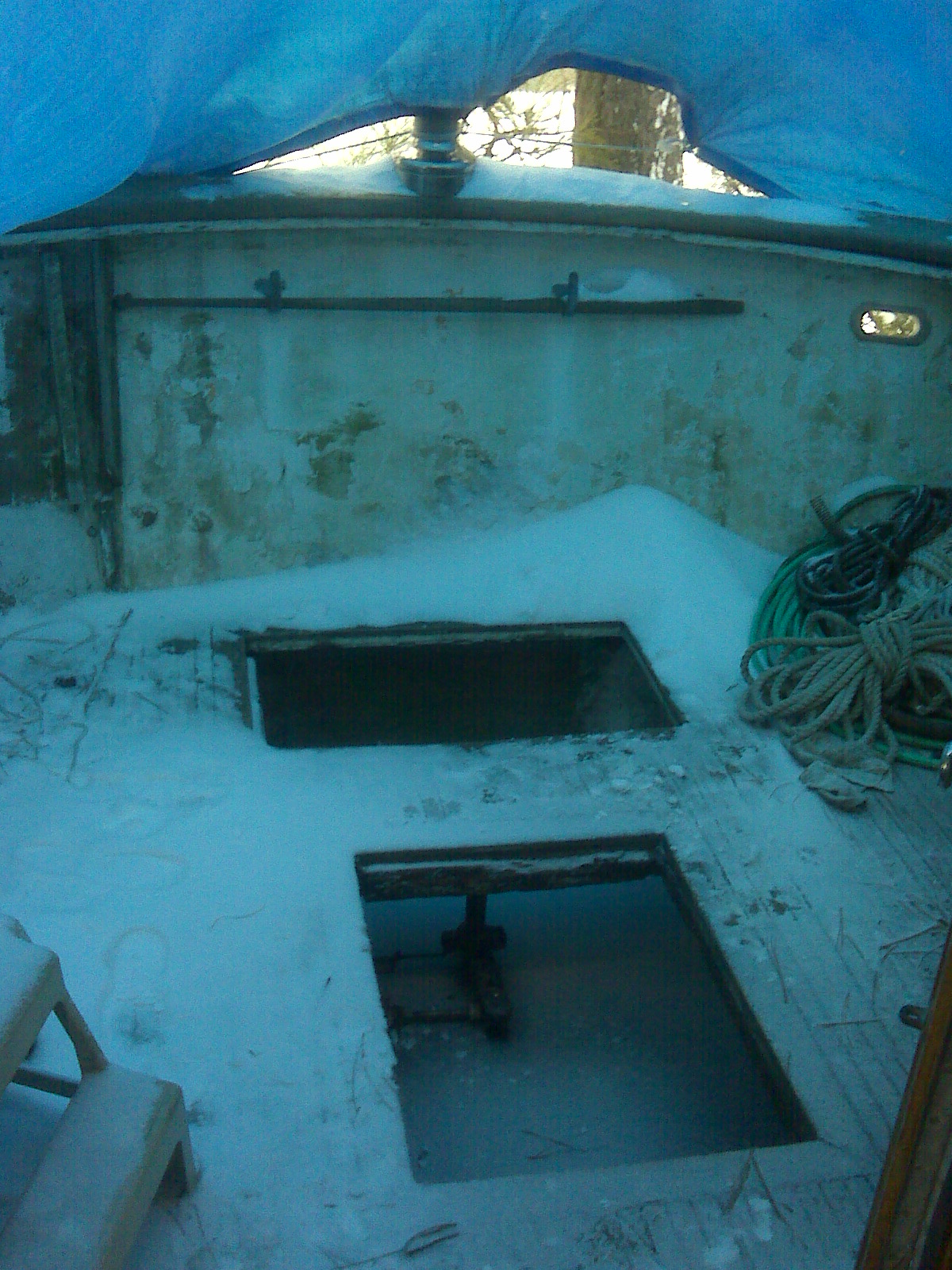 I found the aft hold filled with solid ice– somewhere down in there is a bilge-pump. Not a good idea to try to run ’em when they’re embedded in ice, so it’s a perfect time to re-run the wiring and install the fused switches. They’re done (short of mounting the panel), but can’t be tested until the ice melts.
I found the aft hold filled with solid ice– somewhere down in there is a bilge-pump. Not a good idea to try to run ’em when they’re embedded in ice, so it’s a perfect time to re-run the wiring and install the fused switches. They’re done (short of mounting the panel), but can’t be tested until the ice melts.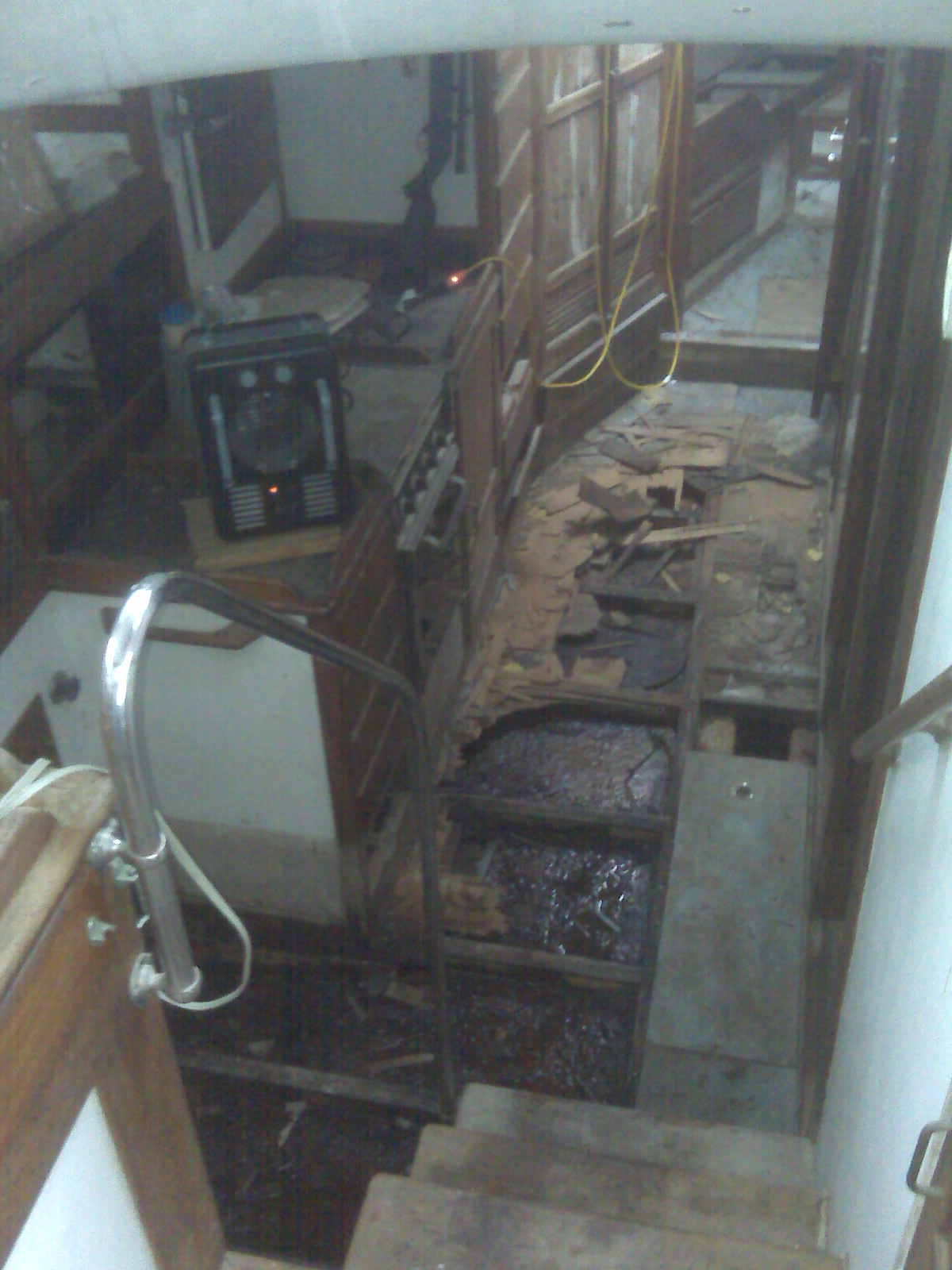 The ice standing on the tops of the fuel tanks below the rotted cabin-sole also prevents me from cleaning that out– the splinters of old plywood are embedded in it. Eventually I hope to find/clean out/install limber-holes in the deck supports to let any water standing on the tanks to drain into the “slot” between them, where the forward pump is. Once she’s afloat, the motion of the ocean should help that along. You can see the “slot” in this picture at the bottom of the companionway stairs, mostly covered by a rotted, removable cover. The space-heater took the edge off the cold, but the snow I tracked in on the salon floor never melted. Draw your own conclusions.
The ice standing on the tops of the fuel tanks below the rotted cabin-sole also prevents me from cleaning that out– the splinters of old plywood are embedded in it. Eventually I hope to find/clean out/install limber-holes in the deck supports to let any water standing on the tanks to drain into the “slot” between them, where the forward pump is. Once she’s afloat, the motion of the ocean should help that along. You can see the “slot” in this picture at the bottom of the companionway stairs, mostly covered by a rotted, removable cover. The space-heater took the edge off the cold, but the snow I tracked in on the salon floor never melted. Draw your own conclusions.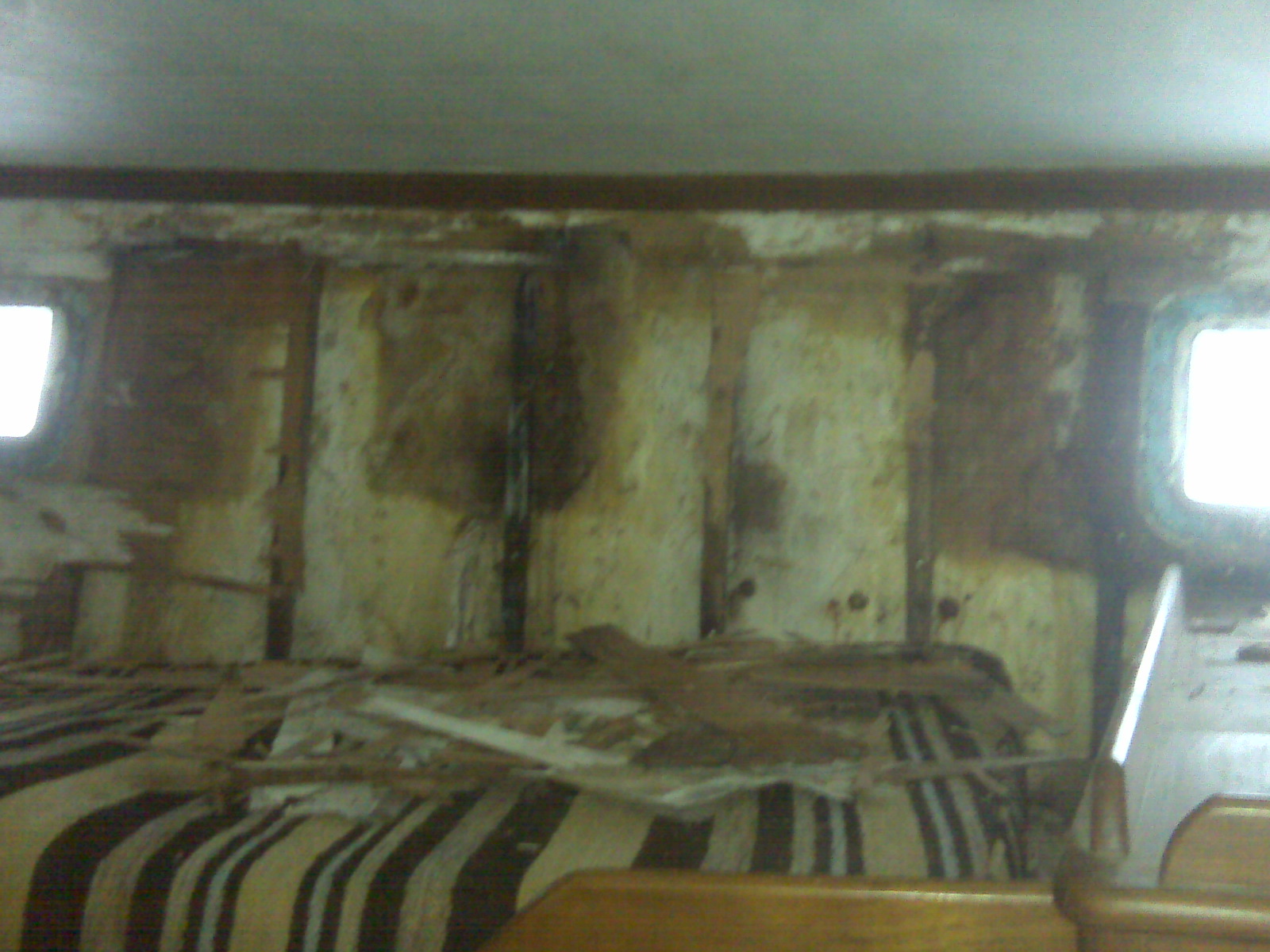 Here’s a shot of the worst weather leak– the water runs in between the deck and the hull. The plywood bulkheads are completely rotted away and the fiberglass is discolored, but still solid. I’m continually amazed at how good condition the structural parts of this boat remain. The frames along the hull are solid as ever, as are the deck supports, etc. everywhere else. Only the cosmetic bits have rotted over the years.
Here’s a shot of the worst weather leak– the water runs in between the deck and the hull. The plywood bulkheads are completely rotted away and the fiberglass is discolored, but still solid. I’m continually amazed at how good condition the structural parts of this boat remain. The frames along the hull are solid as ever, as are the deck supports, etc. everywhere else. Only the cosmetic bits have rotted over the years.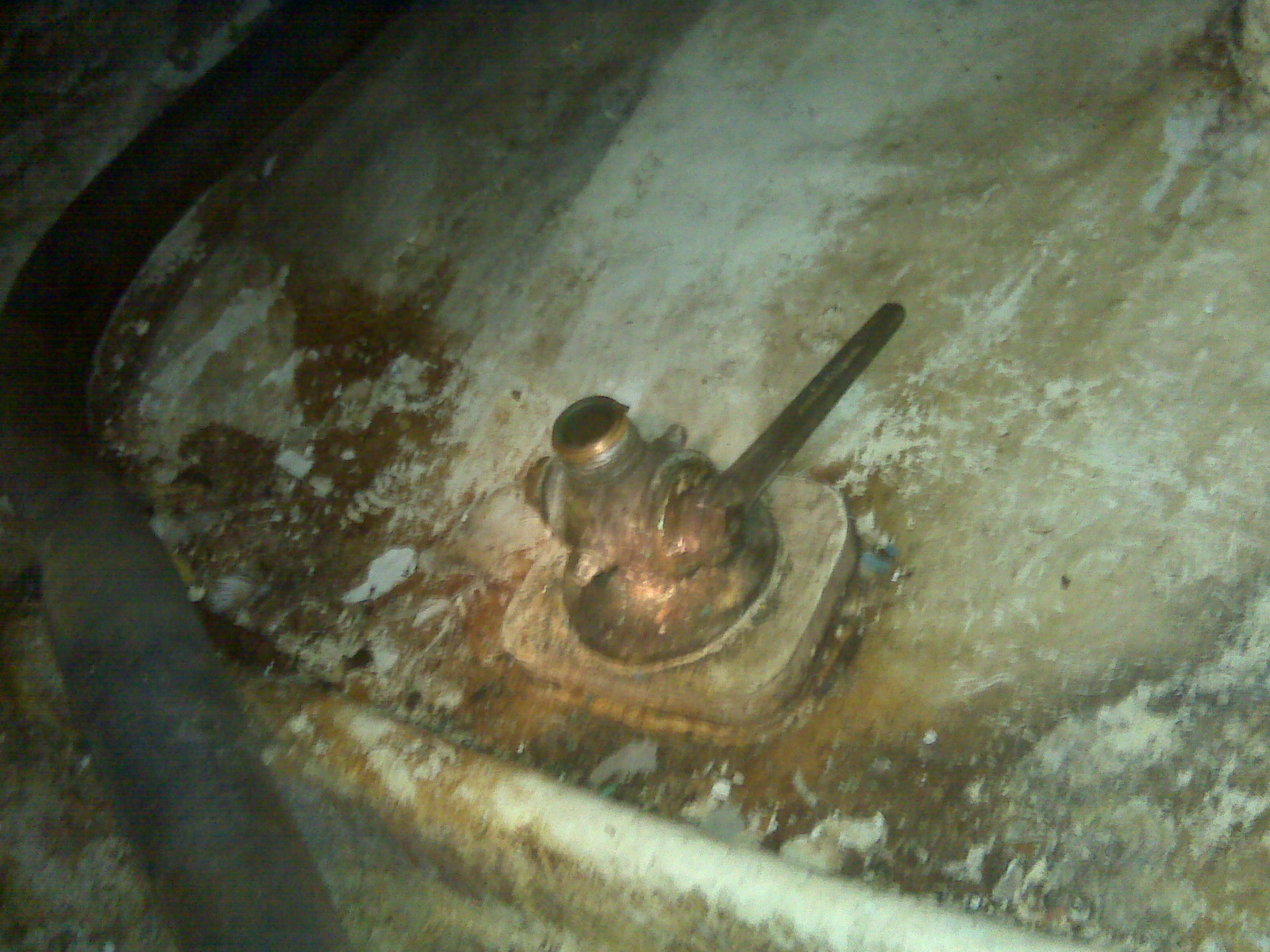 Before the cold set in, I had been working on the thru-hulls and sea-cocks. Here’s a shot of an original engine raw-water intake. This one was in good shape, only needing to be disassembled, cleaned, lubricated and put back together. Another one forward, which had been connected to some less-than-marine-grade plumbing (one tee-fitting was so corroded it fell to pieces when I put a wrench on it) had to be replaced.
Before the cold set in, I had been working on the thru-hulls and sea-cocks. Here’s a shot of an original engine raw-water intake. This one was in good shape, only needing to be disassembled, cleaned, lubricated and put back together. Another one forward, which had been connected to some less-than-marine-grade plumbing (one tee-fitting was so corroded it fell to pieces when I put a wrench on it) had to be replaced.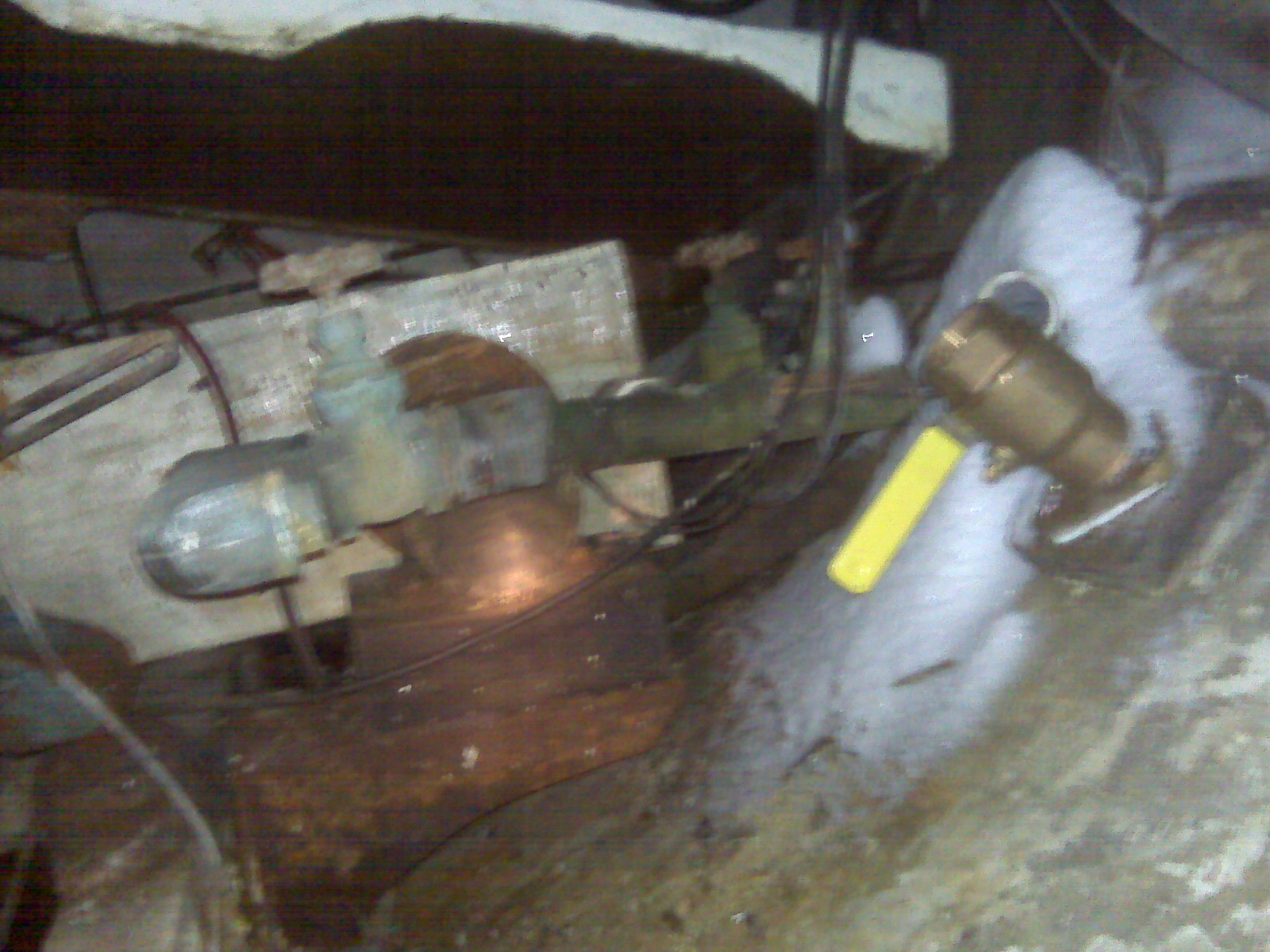 Here’s the new one (with the yellow handle). Somewhere above it some air (carrying blowing snow) is coming in, probably from a disconnected deck-scupper. You can see the remains of some of the old plumbing on the left. Sorry for the picture quality, but low light levels on a cell-phone camera, with shaky frozen hands…
Here’s the new one (with the yellow handle). Somewhere above it some air (carrying blowing snow) is coming in, probably from a disconnected deck-scupper. You can see the remains of some of the old plumbing on the left. Sorry for the picture quality, but low light levels on a cell-phone camera, with shaky frozen hands…